The phrase “Sorry to disturb you” is a common and polite way to gently get someone’s attention without sounding intrusive. Whether you’re reaching out via message, phone call, or in person, it helps to show respect for the other person’s time and space. Using this simple apology before making a request or asking a question can create a positive tone and ease communication.
Another or Professional Way to Say“Sorry To Disturb You”
- Pardon the interruption
- Hope I’m not catching you at a bad time
- I appreciate your patience
- Thank you for sparing a moment
- Excuse me for the brief note
- Just a quick question, if it’s okay
- If this isn’t a bad moment
- Grateful for your time
- Allow me a moment of your attention
- Bear with me for a second
- May I impose on you briefly?
- Kindly excuse my interruption
- I’d value your input, if you can spare a minute
- A quick word when you’re fre
- A brief message to share with you
- This shouldn’t take lon
- When you have a second, please
- Prompting briefly for your help
- Pertinent question, hope timing’s okay
- Requesting your attention momentaril
- Could I borrow your ear for a sec?
- I won’t take much of your time
- Just touching base—hope it’s okay
- Seeking your guidance briefly
- Hoping to catch you for a moment
- A short check‑in, if you’re available
- If convenient, may I ask…
- Let me know if now work
- Just a small favor to ask
- Would you mind sparing a momet?
1. Pardon the interruption
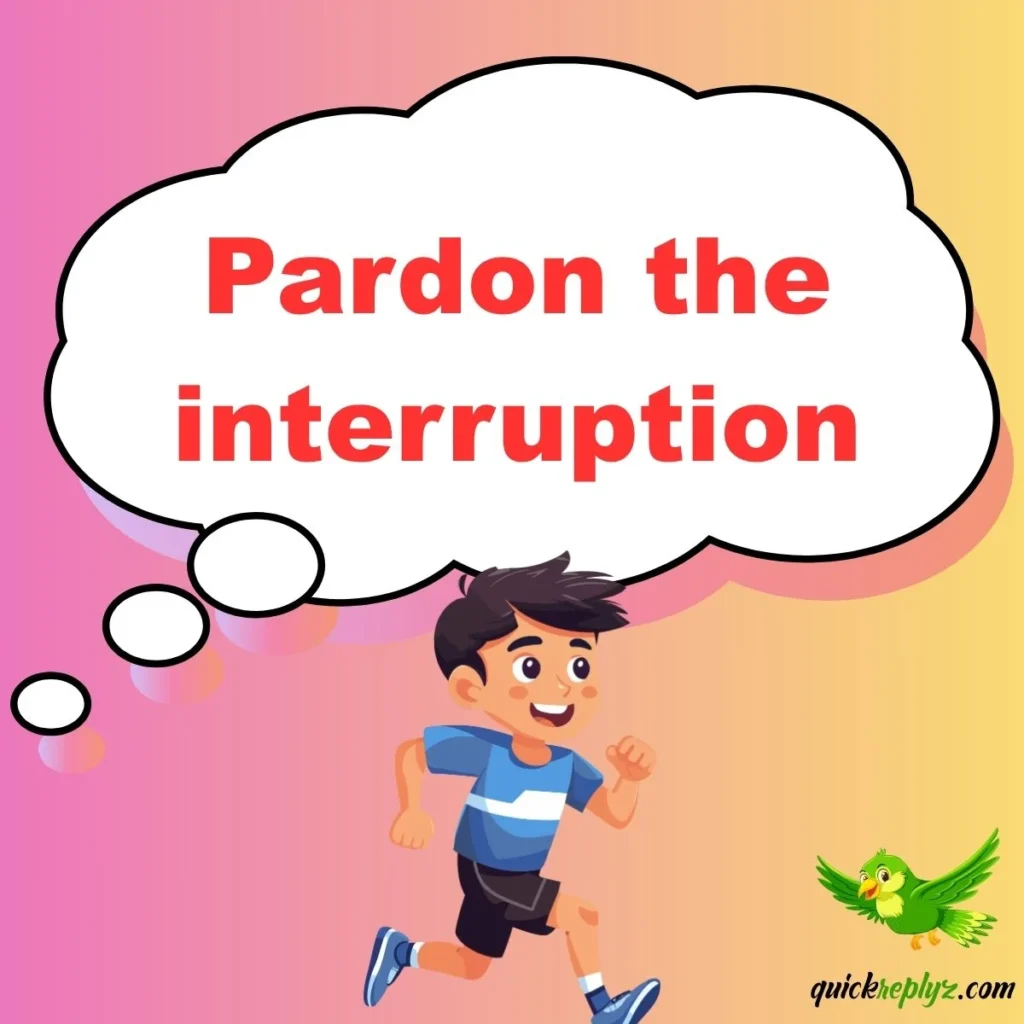
I once messaged a busy colleague mid‑morning: “Pardon the interruption, but…”. It felt sincere and respectful—acknowledging their focus and softening my ask. They appreciated the tone and responded promptly with help.
Example:
Pardon the interruption, but could you review this draft before lunch?
Best use: professional emails or Slack where someone’s working deeply.
2. Hope I’m not catching you at a bad time
In a casual chat with a friend, I began with this phrase before asking for travel advice. It showed awareness of their schedule and made them comfortable helping. They answered right away.
Example:
Hope I’m not catching you at a bad time—could I ask about your recent trip to Paris?
Best use: informal messages where you’re mindful of someone’s availability.
3. I appreciate your patience
I wrote this in a follow‑up email after my previous message went unanswered. It reminded the recipient gently that I valued their time and patience. They replied later with detailed feedback.
Example:
I appreciate your patience; I’m following up on the marketing proposal.
Best use: follow-up messaging when waiting for a response.
4. Thank you for sparing a moment
When emailing a busy mentor, I used this phrase in the subject and body. It conveyed gratitude upfront, making them more receptive. I received a thoughtful reply soon after.
Example:
Thank you for sparing a moment—I’d love your opinion on my project outline.
Best use: respectful, appreciative tone in volunteer or mentor communication.
5. Excuse me for the brief note
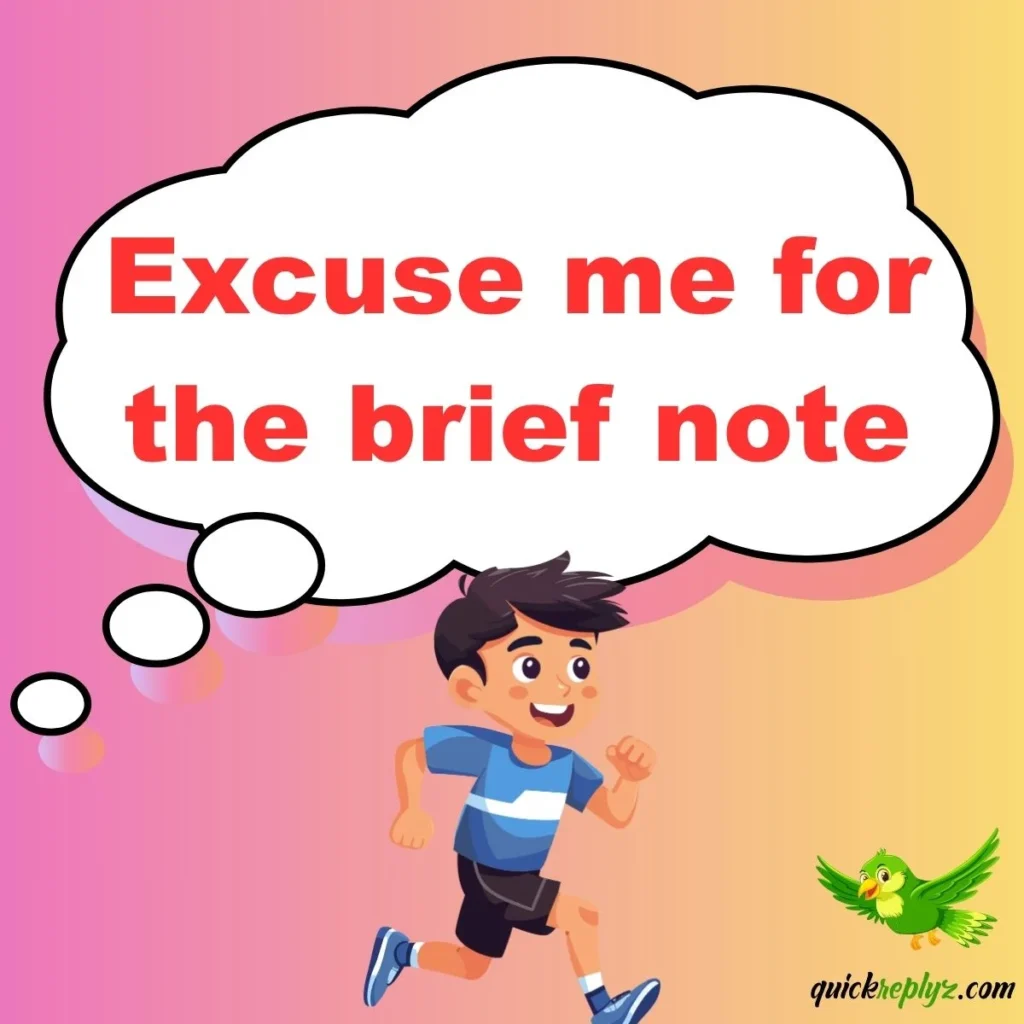
I started a message to a client with this phrase before delivering some quick updates. It framed the email as short and respectful, and the client responded positively.
Example:
Excuse me for the brief note, but we’ve updated the schedule for next week.
Best use: short status updates or notifications.
6. Just a quick question, if it’s okay
While networking, I messaged someone on LinkedIn and used this phrase. The light‑tone intro made them more willing to answer my question about industry trends.
Example:
Just a quick question, if it’s okay—what software do you use for team planning?
Best use: casual professional outreach or informational queries.
7. If this isn’t a bad moment
I used this phrase before asking a professor a question by email, conveying sensitivity to their time. They replied warmly within an hour.
Example:
If this isn’t a bad moment, could you clarify the assignment details?
Best use: respectful inquiries to busy authority figures.
8. Grateful for your time
When scheduling a meeting with a partner, I prefaced the invite by saying this. It made the tone gracious, and they said it was refreshing.
Example:
Grateful for your time—could we connect for 10 minutes tomorrow?
Best use: meeting requests or calendar invites where tone matters.
9. Allow me a moment of your attention
I wrote this when reaching out to a potential investor. It sounded formal but polite. They replied asking for a pitch deck.
Example:
Allow me a moment of your attention—I’d like to share a business opportunity.
Best use: formal or high‑stakes requests in professional correspondence.
10. Bear with me for a second
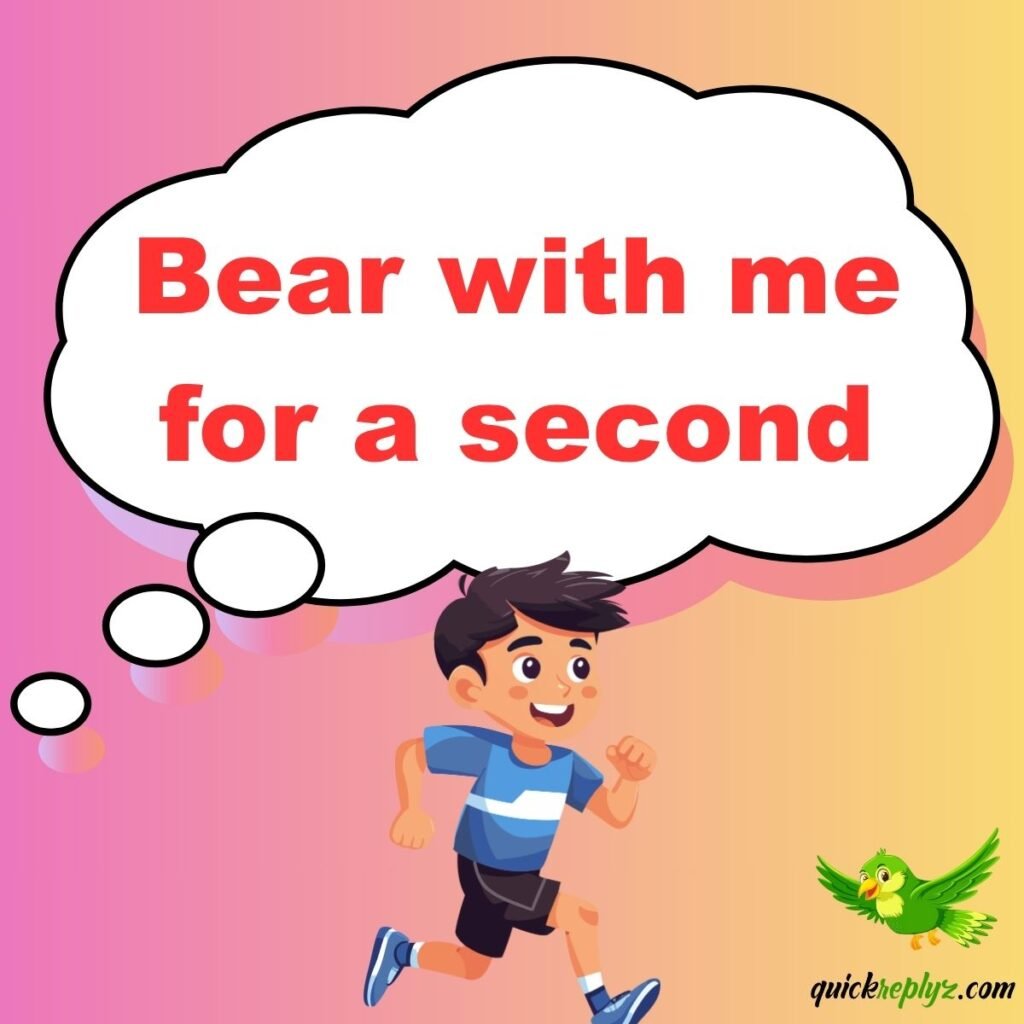
In a fast‑moving chat with a teammate, I typed this before asking a disruptive question. It softened the interruption and kept the flow friendly.
Example:
Bear with me for a second—do we have that report for Monday?
Best use: timely queries during ongoing discussions or meetings.
11. May I impose on you briefly?
Before asking for feedback, I used this phrase in an email and it was received well—making the request feel considerate.
Example:
May I impose on you briefly to review this proposal?
Best use: polite requests for favors or critique.
12. Kindly excuse my interruption
I messaged a vendor with this phrase before asking a scheduling question. It maintained respect and professionalism.
Example:
Kindly excuse my interruption—can we shift our call by half an hour?
Best use: service provider or vendor communications.
13. I’d value your input, if you can spare a minute
When seeking advice from a former manager, I included this phrase. It showed deference and they were happy to help.
Example:
I’d value your input, if you can spare a minute—what would you suggest for this section?
Best use: mentorship or advisory outreach.
14. A quick word when you’re free
Messaging a friend about weekend plans, I prefaced with this. It felt casual, respectful, and they responded cheerfully.
Example:
A quick word when you’re free—are you up for brunch this Saturday?
Best use: casual but considerate social messages.
15. A brief message to share with you
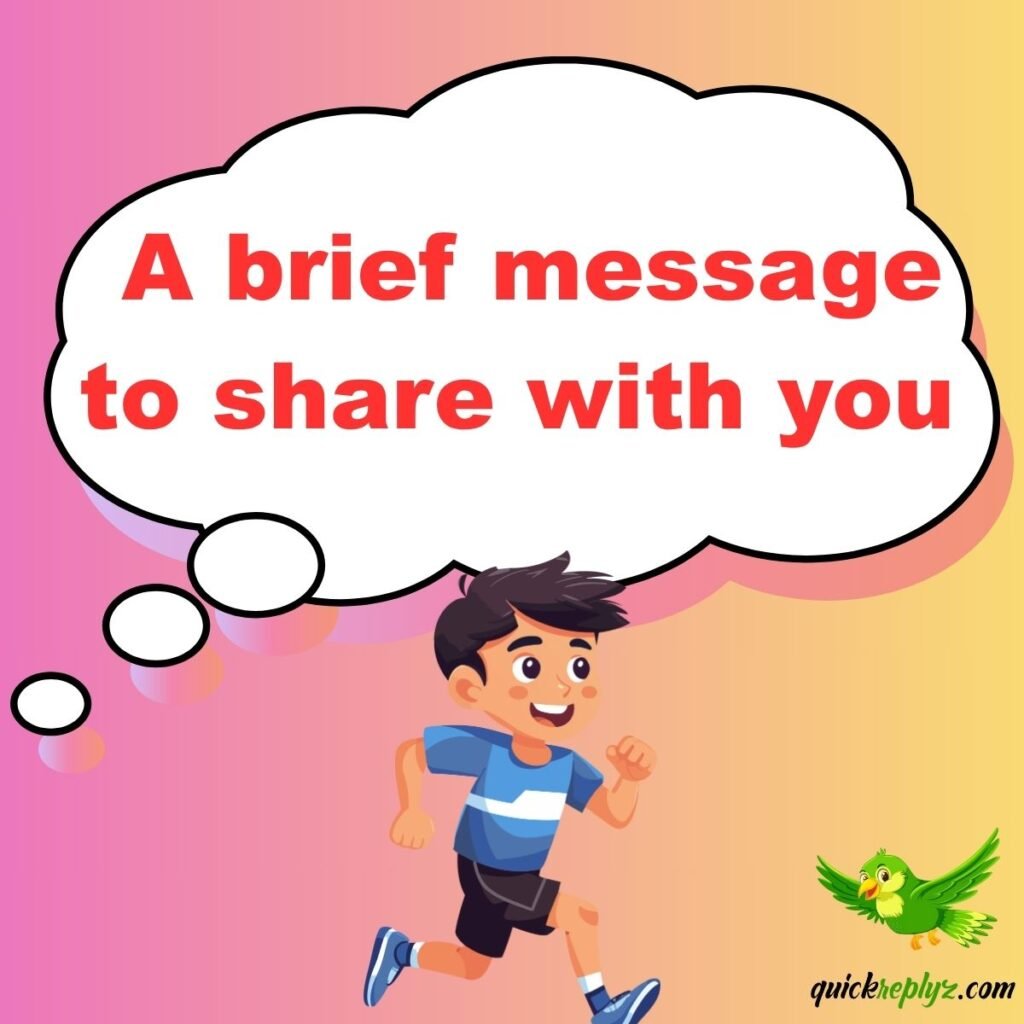
In a company newsletter draft, I began with this. It indicated brevity and respect for the reader’s time.
Example:
A brief message to share with you: we’re rolling out new benefits next month.
Best use: internal communications or updates.
Also Read This :30 Ways to Respond to “How Can I Best Support You?”
16. This shouldn’t take long
I used this throughout a voice note before asking a clarifying question. It reassured the listener that the ask is quick.
Example:
This shouldn’t take long—can I confirm the meeting link?
Best use: short calls or voice messages.
17. When you have a second, please
Quick email to a colleague: this phrase made it easy to ask for help without sounding demanding.
Example:
When you have a second, please review the budget figures.
Best use: low‑pressure requests in professional settings.
18. Prompting briefly for your help
Used this in customer support context—polite prompt that framed my request nicely.
Example:
Prompting briefly for your help with resetting my access.
Best use: technical or support queries.
19. Pertinent question, hope timing’s okay
Forwarded this heading before sending a pressing yet respectful question. It balanced urgency and courtesy.
Example:
Pertinent question, hope timing’s okay—did we finalize the vendor selection?
Best use: time-sensitive operational inquiries.
20. Requesting your attention momentarily
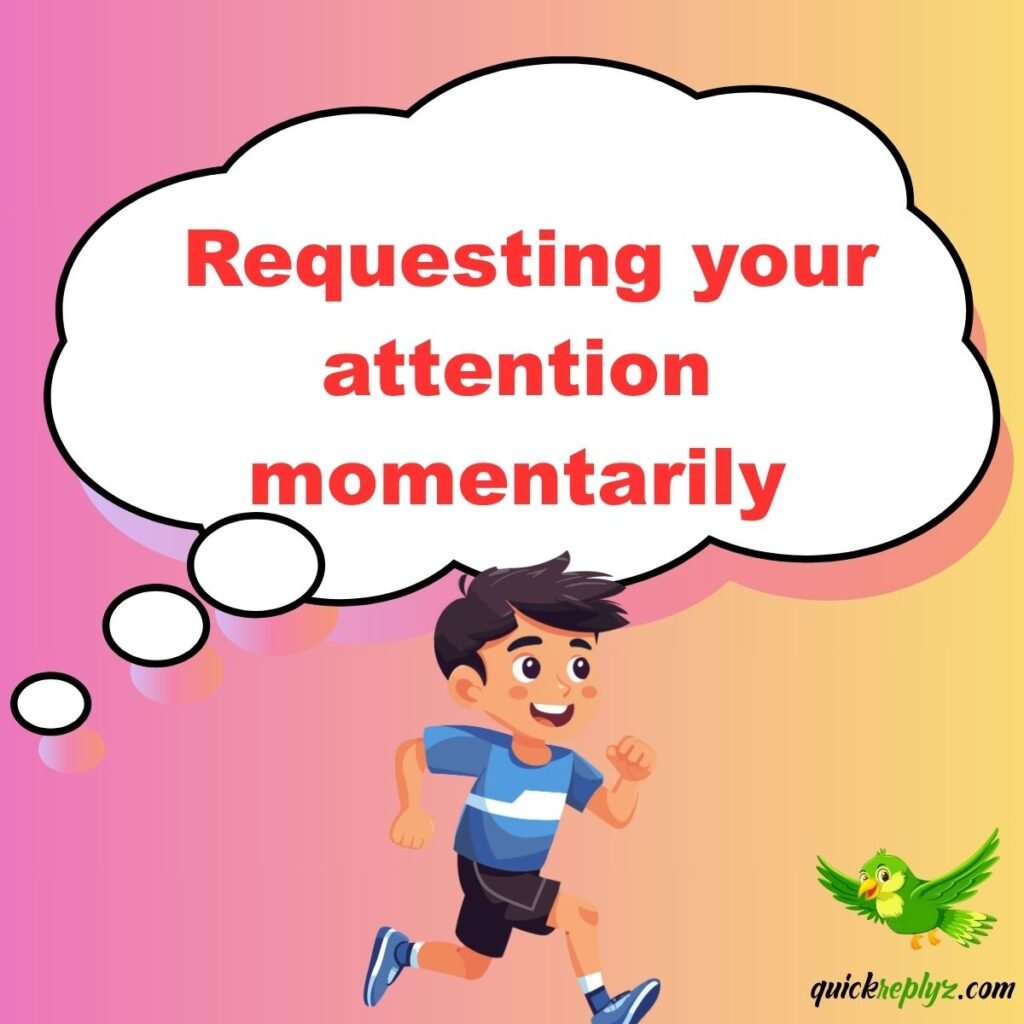
Used in executive email for stakeholder updates. It set a serious tone in a respectful way.
Example:
Requesting your attention momentarily regarding the Q3 deliverables.
Best use: formal business or leadership communication.
21. Could I borrow your ear for a sec?
Texted a peer using this phrase—it felt friendly and casual, and they were glad to help.
Example:
Could I borrow your ear for a sec? Need a quick opinion on the design.
Best use: informal professional chats.
22. I won’t take much of your time
Prefacing a pitch or ask: this phrase held respect and reduced perceived burden.
Example:
I won’t take much of your time—can I get your thoughts on this slide deck?
Best use: concise professional requests.
23. Just touching base—hope it’s okay
Used this phrase when following up with a client. It felt proactive yet considerate.
Example:
Just touching base—hope it’s okay—to check on your decision timelines.
Best use: client follow-ups or status inquiries.
24. Seeking your guidance briefly
Reached out to a senior leader with this phrase. It conveyed deference, and they provided thoughtful direction.
Example:
Seeking your guidance briefly on the project scope.
Best use: hierarchical or mentorship correspondence.
25. Hoping to catch you for a moment
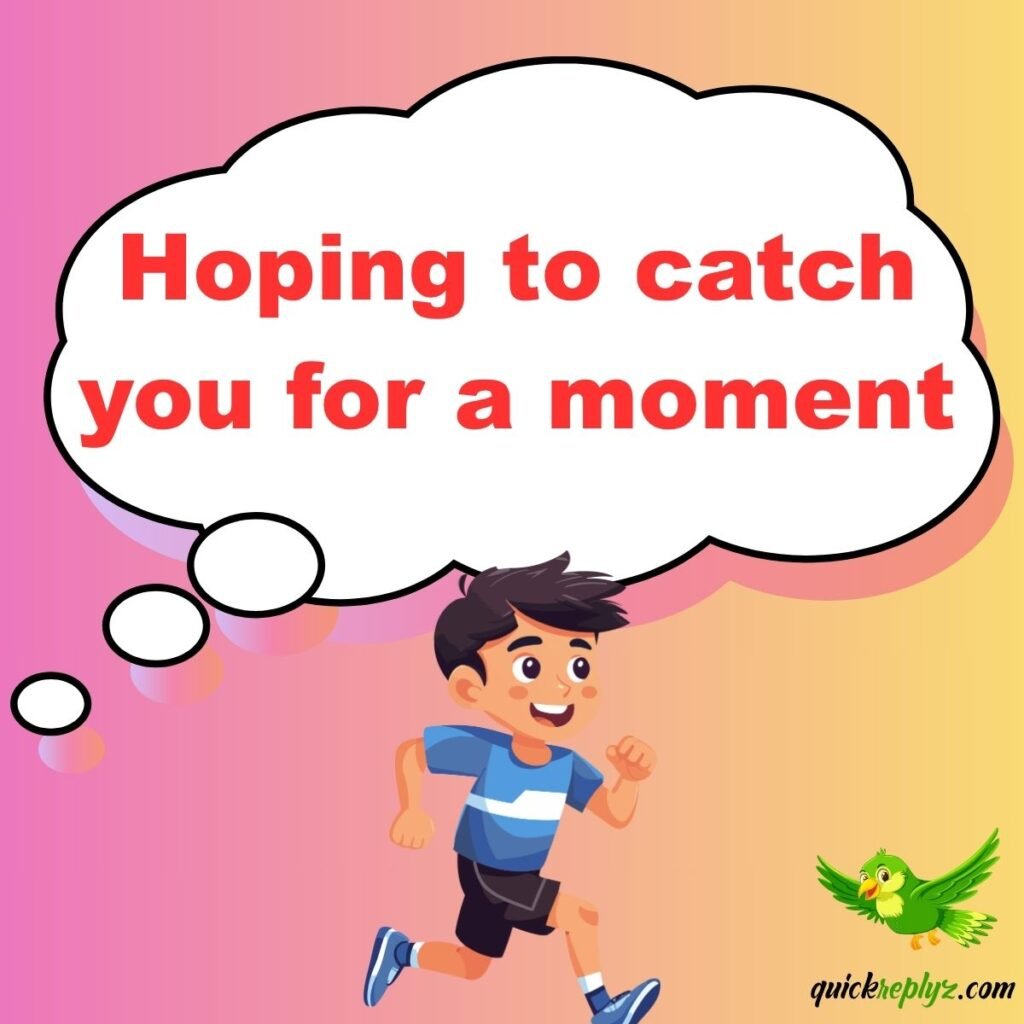
Used casually to coordinate availability with a coworker. It felt polite and friendly.
Example:
Hoping to catch you for a moment—can you explain this workflow?
Best use: quick clarifications or teach‑ins.
26. A short check‑in, if you’re available
Sent to a remote team member after a meeting. It invited feedback at their convenience.
Example:
A short check‑in, if you’re available—we’d love your thoughts on the draft.
Best use: distributed team collaboration.
27. If convenient, may I ask…
Polite phrasing when emailing someone in another time zone. It respected their availability.
Example:
If convenient, may I ask for a status update on the campaign?
Best use: cross‑time‑zone professional queries.
28. Let me know if now works
Used in scheduling back‑and‑forth. It showed flexibility and respect.
Example:
Let me know if now works for our call, or I can adjust.
Best use: calendar coordination & scheduling.
29. Just a small favor to ask
Prefaced a light request to a peer: they felt comfortable helping because it sounded modest.
Example:
Just a small favor to ask—could you send me the final report?
Best use: friendly, minor requests.
30. Would you mind sparing a moment?

Used when reaching out to someone I didn’t know well. It sounded courteous and considerate, earning a reply.
Example:
Would you mind sparing a moment to answer a quick question about your service?
Best use: polite outreach to new contacts or recipients.
Conclusion
Apologizing with “Sorry to disturb you” is a respectful way to acknowledge that you may be interrupting someone’s time or focus. It shows consideration and politeness, helping to maintain good communication and positive relationships. Whether in person, over the phone, or via message, this phrase softens your approach and prepares the other person for your request or question. Using it thoughtfully can make interactions smoother and more courteous.
FAQs
1. When should I use the phrase “Sorry to disturb you”?
Use it when you need to interrupt someone politely, whether in person, on a call, or in a message, especially if you think they might be busy.
2. Is “Sorry to disturb you” formal or informal?
It’s a polite phrase suitable for both formal and informal situations, making it versatile for professional and casual use.
3. Can I say “Sorry to disturb you” in emails?
Yes, it’s commonly used in emails to politely preface a question or request, showing consideration for the recipient’s time.
4. What are alternatives to saying “Sorry to disturb you”?
Other polite alternatives include “Sorry for interrupting,” “Excuse me for bothering you,” or simply “Pardon me.”
5. Does saying “Sorry to disturb you” make the request seem less urgent?
Not necessarily. It shows politeness but doesn’t reduce the importance of your message; it just softens the approach to respect the other person.

